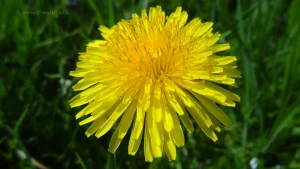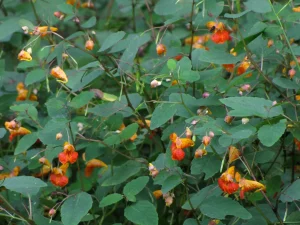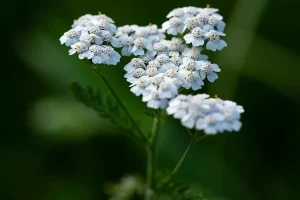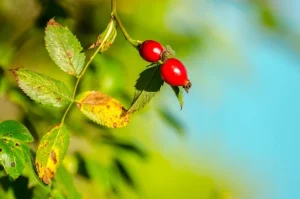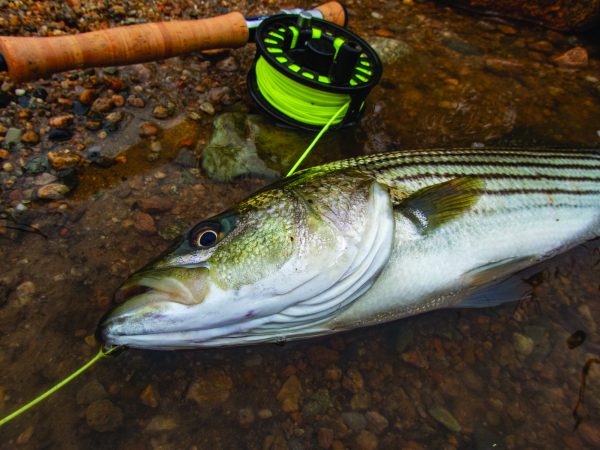When it comes to camping and being out in the wild, you never know what kind of situation you may find yourself in. Finding medicinal plants while camping can not only cure your ailments but can also be an enjoyable learning experience.
Identifying medicinal plants while camping can seem daunting to beginners, but certain easy-to-recognize characteristics can help. In this article, we’ll highlight five common medicinal plants that you might stumble upon during your camping trips.
Not only will you learn how to identify these plants, but also learn their healing properties and how to safely utilize them in case of minor health issues while you’re out camping.
Table of Contents
Benefits of Medicinal Plants while Out Camping
There are many types of plants out in the wild that can help with a variety of problems. Here are some of how medicinal plants can help campers:
- Healing wounds and cuts: Many plants have antiseptic and antibacterial properties that can help clean and heal wounds.
- Soothing insect bites: Some have anti-inflammatory properties that can help reduce swelling and itching from insect bites.
- Relieving indigestion and stomach issues: Certain species have digestive properties that can help alleviate stomach problems such as upset stomach or diarrhea.
- Reducing fever and inflammation: Specific plants have fever-reducing properties that can help reduce body temperature during times of fever.
- Relieving pain: Many plants have pain-relieving properties that can help alleviate headaches, muscle aches, and other types of pain.
Medicinal plants can be an effective and natural way to manage minor health issues during camping trips. However, knowing how to identify and use these plants correctly can potentially even save a life.
5 Common Medicinal Plants to Keep an Eye Out For
As a beginner, you may feel overwhelmed by the prospect of identifying and using medicinal plants. With a little patience and an identification or two under your belt you’ll be able to easily pick them out amongst the other plants.
Common Plantain and Lance Leaf Plantain
These plants are native to North America and can be found in grassy areas, meadows, and along roadsides. The growing season for plantain is from May to October. The leaves of plantain are long and oval, and the flowers grow on spikes that can reach up to 18 inches tall.
The Common Plantain (Plantago major) is also known by several other names such as White Man’s Foot, Greater Plantain, or Rat-tail Plantain, whereas the Lance Leaf Plantain (Plantago lanceolata) is often referred to as English Plantain, Buckhorn, or Ribwort.
The leaves of common plantain and lance leaf plantain can be used for a variety of medicinal purposes. They have anti-inflammatory and antibacterial properties that can help soothe insect bites, reduce swelling, and promote the healing of cuts and wounds.
Use plantain to help create the following remedies:
- Tea made from plantain leaves: helps with respiratory problems.
- Crushed plantain leaves: applied to the skin as a poultice for insect bites or stings, reducing inflammation and easing discomfort.
- Healing tea brewed from plantain leaves: beneficial for soothing sore throats or coughs when consumed.
- Plantain-infused oil: popular remedy, used in natural salves for its skin-healing properties.
- Dried plantain leaves: powdered and used as a wound dressing to promote healing and prevent infection.
Both the Common Plantain and Lance Leaf Plantain are versatile medicinal plants, thriving abundantly in various environments and offering a wide range of health benefits.
Dandelion
Dandelions (Taraxacum officinale) are often considered to be a weed, but they are a very useful plant. They can be found in many areas of North America, including open fields, meadows, and along roadways. The growing season for dandelions is from early spring to late fall.
While dandelions are generally safe to consume, it’s important to be aware of lookalike plants that can be toxic. For instance, the Catsear plant closely resembles a dandelion, yet its consumption can cause allergic reactions in some individuals.
The leaves of dandelions are long and toothed, and the flowers are bright yellow. The flowers will turn white as they start to spread their windblown seeds.
They have anti-inflammatory properties that can help alleviate pain and swelling. The leaves can also be a natural diuretic, which can help relieve water retention and swelling.
These are some of the things you can use dandelion for:
- Make a tea: The leaves of the dandelion plant can be steeped in hot water to make a potent tea, known to aid digestion and detoxification. The roots, when roasted and ground, serve as a coffee substitute and are said to provide liver support.
- Create a balm: Dandelion flowers, infused in oil, can be used to create a balm that soothes aches and pains.
- Make your own cough syrup: You can even create a syrup made from dandelion flowers that is an effective natural remedy for coughs and colds.
The humble dandelion, though often overlooked, is a powerhouse of medicinal benefits. Its versatility and accessibility make it a valuable addition to your natural health toolkit.
Jewelweed
Jewelweed (Impatiens capensis), also called Spotted Touch-Me-Not is a North American plant that can be found in wet and shaded areas, such as near streams and damp soil. The growing season for jewelweed is from May to October.
It is crucial to note that while jewelweed is generally safe, it has a toxic lookalike known as Pale Jewelweed (Impatiens pallida). Consuming Pale Jewelweed can lead to mild to severe gastrointestinal issues, therefore, proper identification of jewelweed is essential before use.
Jewelweed has been used for centuries for its medicinal properties. It has anti-inflammatory properties that can help reduce swelling and itching from insect bites, poison ivy, and other skin irritations.
Jewelweed can be used to create various natural remedies:
- Soothing salve: Infuse the leaves and stems of the plant in carrier oil (e.g., olive or coconut oil), mix with beeswax, and apply directly on skin irritations for relief.
- Topical application: Use the juice from the stem directly on insect bites and stings to soothe itching.
- Tea: Make jewelweed tea from the leaves and stems of the plant and use it as a wash for treating athlete’s foot.
- Soap: Regularly use jewelweed soap, which includes the plant’s infusion, to ward off potential skin irritations.
It is one of the best medicinal plants you can stumble across while camping since it is perfect to help with biting insects and nasty poison ivy.
Yarrow
Yarrow (Achillea millefolium) is a North American plant that can be found in open fields, meadows, and along roadsides. The growing season for yarrow is from early summer to late fall. The plant has small white or pink flowers and feathery, fern-like leaves.
Just as with jewelweed, one must be cautious with yarrow as it also has a lookalike known as Poison Hemlock (Conium maculatum). The Hemlock plant is highly toxic and can be fatal if ingested, making accurate identification of yarrow essential for safe use.
Yarrow has many medicinal properties. It has anti-inflammatory and antiseptic properties that can help clean and heal wounds, reduce swelling, and relieve pain. Some people also use yarrow to help with digestive issues, such as indigestion and diarrhea.
Here are some of the ways you can use Yarrow in natural remedies:
- Yarrow tea: Simmer leaves in hot water, strain, and drink to aid with digestive issues.
- Poultice: Crush fresh yarrow leaves and apply topically to clean and heal wounds.
- Salve: Mix yarrow-infused oil with beeswax to create a salve for wound healing and pain relief.
- Yarrow juice: Crush yarrow leaves to extract the juice, and apply topically to soothe skin irritations.
- Compress: Soak a cloth in yarrow tea and apply it to wounds for faster healing.
- Mouthwash: Gargle yarrow tea to help with toothache and gum infections.
The versatility of the yarrow makes it a powerful addition to any outdoor survival kit. Its various applications, from wound healing and pain relief to aid with digestive issues, highlight Yarrow’s significant role in natural medicine.
Wild Rose
Wild roses are native to North America and can be found in open fields, meadows, and along roadsides. The growing season for wild roses is from late spring to early fall.
The plant has pink or white flowers and a fragrant scent. Identifying wild roses for beginners can be quite straightforward due to their distinctive features. Look for plants with clusters of five petals per flower in hues of pink or white, often accompanied by a strong, pleasing fragrance, and serrated leaves grouped on the stem.
The petals and hips of wild roses are used for medicinal purposes. They have anti-inflammatory and astringent properties that can help relieve skin irritations and help with wound healing. Wild roses are also a rich source of vitamin C, known to boost the immune system and promote healing.
These are some of the natural remedies you can make with wild roses:
- Petal Tincture: Wild rose petals could be soaked in alcohol to create a tincture, which can be used to alleviate skin irritations and inflammation.
- Vitamin C Tea: A tea made from the hips of wild roses is rich in vitamin C and can help to boost the immune system.
- Rose Hip Oil: Oil extracted from rose hips can be applied topically to help with wound healing, owing to its anti-inflammatory and astringent properties.
- Facial Toner: A toner made from rose petals can help to cleanse the skin and reduce inflammation.
- Rose Petal Bath: Adding wild rose petals to a warm bath can provide a soothing and fragrant experience, which can aid in relaxation and stress relief.
- Rose Hip Syrup: A syrup made from rose hips can be a delicious source of vitamin C and can be used in cooking or as a natural sweetener.
The versatility of rose hips and petals goes far beyond this list as they are used in a variety of commercial industries.
Go on a Medicinal Plant Scavenger Hunt!
Knowing how to identify and use medicinal plants while camping can be a valuable skill that can potentially save your life, or at the very least stop some severe itching. Remember to always be cautious and do your research before using any plants for medicinal purposes. Happy camping and happy healing!


